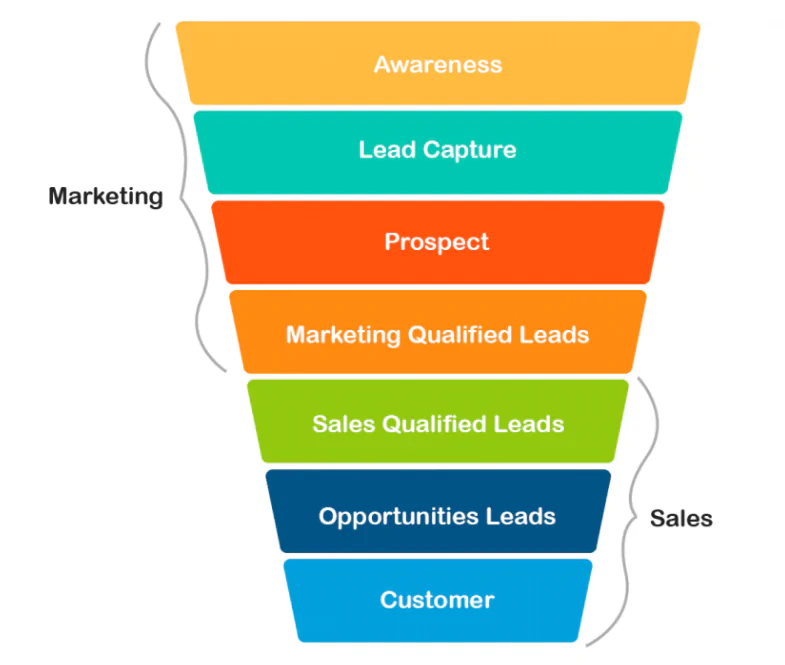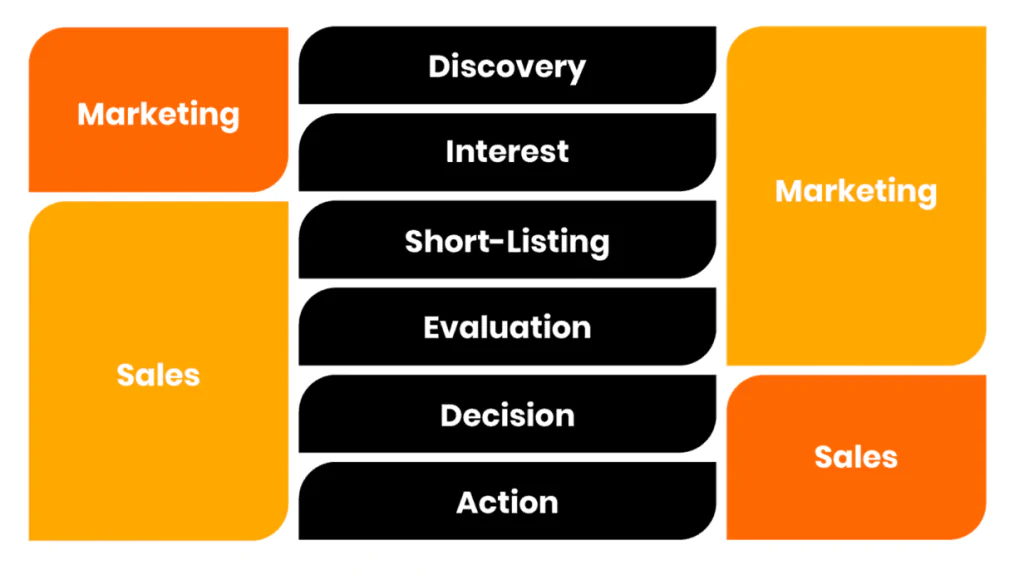The corporate world has long separated the tasks of marketing and sales into two separate departments. While marketing professionals focus on bringing in leads, the sales department works on closing them.
Sounds like a good way to distribute responsibilities, right? Yet, this arrangement is far from perfect.
Today, marketing and selling are driven by data and processes developed and perfected over the past one hundred years. That makes most product segments extremely competitive and very vast.
In many industries (especially those with predominantly offline sales cycles), the physical distance between marketing and sales teams is widening – while marketing and branding initiatives are carried out from HQ, sales efforts are carried out at showrooms, dealerships, and outlets. Despite this apparent disconnect, your ideal customer needs to be wooed throughout their journey with consistent messaging and synchronized lead nurturing efforts.
For large businesses with multiple locations and distributed sales teams, the question is, how do you provide leads and prospects with a consistent experience that pushes them towards conversion?
The answer lies in sales-marketing alignment.
Key Takeaways:
- Creating and using updated buyer personas for different segments of customers will help Sales and Marketing target the same audience successfully.
- When both departments are involved in defining and setting sales targets, they will be more invested in achieving them and converting leads.
- Data sharing and automation play a key role in sales-marketing alignment.
What Is Sales Marketing Alignment?
As the name suggests, sales-marketing alignment is a unified working style that enables sales and marketing departments to operate as a unit by having shared means of communication, strategies, and goals. Sales marketing alignment can help organizations run high-impact marketing activities, boost brand awareness, acquire more customers and retain them for longer.
The concept sounds simple. The actual process – now popularly called smarketing – is a lot more complex.
Source: Go Squared
Smarketing aims to integrate the sales and marketing of a company by setting up unified strategies, goals, and communication channels. The ultimate goal is to fuse the efforts of the two departments for facilitating better marketing efforts, better lead engagement, and ultimately, selling more.
The Positive Impact of Sales Marketing Alignment
The biggest positive impact of sales-marketing alignment is its effect on revenue.
Did you know that a lack of alignment between these two departments in the corporate world results in losses of over $1 trillion every year?
This is no surprise considering the tons of leads that misaligned teams lose out on.
When you choose to align your sales and marketing efforts, you stand to increase your profits by up to 15%.
Profits come from revenue, revenue comes from sales, and sales come by closing leads. A LinkedIn study found that when done right, sales-marketing alignment helps you close up to 67% more leads and makes you better at retaining customers by 58%.
Naturally, the next question that pops up is, how do you go about achieving this magic day in and day out? The following measures help you do exactly that:
-
Shared Understanding of Buyer Persona & Customer Journey
Marketing and sales departments play very different yet complementary roles in a company. While the marketing department is responsible for attracting leads, the sales department takes care of converting them.
Marketing is a very centralized activity that takes place on a large scale to attract leads from all over the targeted geographical area. Once the leads are attracted, the sales professionals, who operate on a much more local scale, are responsible for converting these leads.
The issue of misalignment usually takes place between the two segments because of their different levels of operation. This causes communication gaps and misunderstandings about the buyer persona being targeted and how a buyer’s journey flows. In many cases, the two departments deliver a very disjointed lead nurturing experience to consumers.
Source: Mage Nest
Sometimes, they even end up blaming each other for it. Publicly.
By creating a shared understanding of the persona and journey of major buyer segments, both departments would be able to deliver a better experience and provide more information at each touchpoint.
Source: Madison Taylor Marketing
They’d have more faith in each other and work in sync. Sales would not feel like the leads being sent to them are not qualified enough. Nor would Marketing doubt Sales’ ability to guide a lead towards a purchase because there would be better clarity about the buyer’s journey.
-
Collaborative Goal Setting
Mismatch in goal setting is a very common problem that plagues corporations with sales-marketing misalignment.
The most basic way of making the marketing and sales departments of a company work together would be through collaborative goal setting.
Perhaps the most significant advantage of collaborative goal setting is data sharing.
When marketing and sales departments are in close touch with each other, they have a better idea about the situation at ground level. There can be times when marketing is pushing a product that is out of stock. Similarly, sales might make the mistake of focusing on selling a product for which demand is waning.
In such a situation, both departments can improve their effectiveness by collaborating with each other. This facilitates better reading of leads’ intent and delivering information that results in quicker closure.
-
Greater Cognizance of KPIs Through Alignment of Data
Building upon the previous point about data swapping and information sharing, sales-marketing alignment results in greater cognizance of their own Key Performance Indicators (KPIs).
KPIs vary greatly for the two departments. Sales KPIs tend to be quantitative – the number of leads closed, renewals, and revenue are a few examples. On the other hand, they are more qualitative for marketing, which focuses on KPIs such as brand awareness, engagement, and lead quality.
Source: Super Office
While these KPIs might not seem connected or even related at a surface level, they can help you level up your revenue by identifying leads that are most likely to convert. Matching a lead’s quality and their brand awareness level with their tendency to make a purchase/renewal is one of the best ways to fuse marketing and sales together.
This allows you to get a broader and deeper understanding of the impact of each of these metrics, while also reaping the benefits of relating them to each other. Overall, it is a highly effective strategy to study the direct correlations between your media spend and revenue generation.
Alignment Works Best with Automation
There remains no doubt that sales-marketing alignment is the way to go for the future of interdepartmental dynamics.
Considering the different ways Marketing and Sales operate, automation is the way to bridge significant communication gaps that costs businesses hundreds of thousands of dollars a year.
Our marketing automation platform lets you craft powerful brand messaging and use consistent sales tactics to close pre-qualified leads at thousands of outlets.
Let’s set up a personalized demo, where we can help you find out how to eliminate lead conversion barriers and implement unified goals, strategies, and outcomes across multiple locations.
Featured Image: Pixabay









